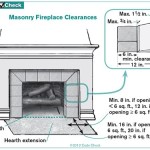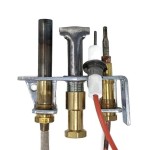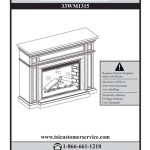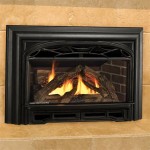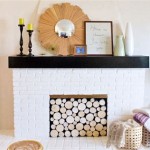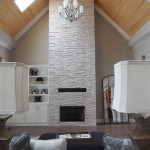How to Build Fireplace Mantels: A Comprehensive Guide
A fireplace mantel serves as both a functional and aesthetic focal point in a room. It provides a surface for displaying decorative items and can significantly enhance the overall ambiance of a living space. Constructing a fireplace mantel is a manageable project for DIY enthusiasts with basic carpentry skills and tools. This article provides a detailed guide on how to build a fireplace mantel from start to finish, covering design considerations, material selection, construction techniques, and finishing touches.
Planning and Design Considerations
Before commencing any construction, careful planning and design are crucial. The design of the mantel should complement the existing architecture and style of the room. Consider the scale of the fireplace and the size of the room to determine appropriate dimensions for the mantel. A disproportionately large mantel can overwhelm a small fireplace, while a small mantel may be lost in a large room.
The mantel design can range from a simple, clean-lined shelf to a more elaborate, ornate structure with intricate carvings. Research various mantel styles, such as traditional, rustic, modern, or contemporary, to identify a design that suits personal preferences and the overall aesthetic of the home. Online resources, home improvement stores, and architectural magazines offer a wealth of inspiration for mantel designs.
Consider local building codes and safety regulations. Mantels must adhere to minimum clearance requirements from the fireplace opening to prevent fire hazards. Consult local building codes or a qualified professional to ensure compliance with all applicable regulations.
When planning the design, take precise measurements of the fireplace opening, the surrounding wall space, and the desired height of the mantel. Accurate measurements are essential for creating a mantel that fits seamlessly and functions properly. Create a detailed sketch or blueprint of the mantel design, including dimensions for all components. This blueprint will serve as a guide during the construction process.
Consider the weight that the mantel will need to support. Heavy objects, such as large vases or picture frames, may require a more robust mantel design with stronger support structures. Factor in the weight-bearing capacity when selecting materials and designing the mounting system.
Material Selection
The choice of materials significantly impacts the appearance, durability, and cost of the fireplace mantel. Common materials include wood, stone, brick, and concrete. Wood is a popular choice due to its versatility, affordability, and ease of workability. Different types of wood offer varying levels of durability and aesthetic appeal.
Softwoods, such as pine and fir, are relatively inexpensive and easy to cut and shape. However, they are more susceptible to dents and scratches than hardwoods. Hardwoods, such as oak, maple, and cherry, are more durable and offer a richer, more refined appearance. However, they are also more expensive and require more specialized tools for cutting and shaping.
Reclaimed wood is another option that offers a unique, rustic aesthetic. Reclaimed wood can be sourced from old barns, factories, or other structures. It often features interesting textures, knots, and imperfections that add character to the mantel. When using reclaimed wood, ensure that it is properly cleaned and treated to remove any pests or contaminants.
Stone, brick, and concrete are durable and fire-resistant materials that can create a more substantial and traditional mantel appearance. Stone mantels can be crafted from natural stone slabs or assembled from individual stone pieces. Brick mantels typically incorporate brick veneer over a wooden frame. Concrete mantels can be cast in place or pre-cast and installed as a single unit.
When selecting materials, consider the overall style of the room and the desired aesthetic for the mantel. Wood is well-suited for traditional, rustic, and contemporary designs. Stone, brick, and concrete are more appropriate for traditional and rustic styles. Prioritize materials that are compatible with the existing fireplace surround and the surrounding wall finishes.
In addition to the primary material, consider the hardware and fasteners required for assembling and mounting the mantel. Choose high-quality screws, nails, and adhesives that are appropriate for the chosen materials. Select decorative hardware, such as corbels or brackets, to add visual interest and support to the mantel.
Construction Techniques
Once the planning and material selection are complete, the construction process can begin. Start by cutting the materials according to the dimensions specified in the blueprint. Use a table saw, circular saw, or hand saw to make precise cuts. Ensure that all cuts are square and accurate to ensure a seamless fit.
Assemble the mantel components using screws, nails, or adhesives. Wood glue is recommended for creating strong and durable joints. Use clamps to hold the pieces together while the glue dries. For heavier components, consider using screws or nails in addition to glue for added strength.
If the mantel design includes decorative elements, such as carvings or moldings, add these elements before mounting the mantel to the wall. Use woodworking tools, such as chisels, rasps, and sanders, to shape and detail the decorative elements. Secure the decorative elements to the mantel using glue, screws, or nails.
Prepare the wall for mounting the mantel. Locate the wall studs using a stud finder. Mark the location of the studs on the wall. Use a level to ensure that the mantel will be mounted horizontally. Drill pilot holes through the mantel and into the wall studs. Secure the mantel to the wall studs using lag screws or other heavy-duty fasteners.
For mantels that require additional support, consider installing corbels or brackets underneath the mantel. Corbels and brackets can be purchased from home improvement stores or crafted from wood or other materials. Secure the corbels or brackets to the wall studs and to the underside of the mantel using screws or nails.
Once the mantel is mounted, fill any gaps or imperfections with wood filler or caulk. Sand the surface of the mantel to create a smooth and even finish. Apply primer to the mantel to prepare it for painting or staining. Allow the primer to dry completely before applying the finish coat.
Finishing Touches
The final step in building a fireplace mantel is applying the finish. The choice of finish depends on the desired aesthetic and the type of material used for the mantel. Paint is a versatile option that allows for a wide range of colors and finishes. Stain enhances the natural beauty of wood and provides a durable protective coating.
If painting the mantel, apply multiple coats of paint, allowing each coat to dry completely before applying the next. Use a high-quality paint brush or roller to achieve a smooth and even finish. Sand lightly between coats to remove any imperfections. Choose a paint color that complements the existing décor of the room.
If staining the mantel, apply the stain evenly using a brush or rag. Wipe off any excess stain to prevent blotching. Allow the stain to dry completely before applying a clear topcoat. Apply multiple coats of topcoat, allowing each coat to dry completely before applying the next. Sand lightly between coats to remove any imperfections.
Consider adding decorative accents to the mantel to enhance its visual appeal. Decorative accents can include candles, vases, picture frames, sculptures, or other decorative items. Arrange the decorative accents in a visually appealing manner, taking care not to overcrowd the mantel.
Inspect the finished mantel for any imperfections or loose connections. Make any necessary repairs or adjustments to ensure that the mantel is secure and visually appealing. Clean the surrounding area to remove any dust or debris.

How To Make An Easy Diy Fireplace Mantel Sprucing Up Mamahood

Diy Fireplace Mantel Designatedspacedesign Com

Diy Rustic Fireplace Mantel The Cure For A Boring

How To Make A Diy Fireplace Mantel The Idea Room

How To Build A Fireplace Mantel Easy Diy Blossoming Life

Easy Diy Fireplace Mantel Tutorial Jessica Welling Interiors

Easy Fireplace Mantel Diy
:max_bytes(150000):strip_icc()/sandandsisal-bdc76ad938a44d28ae9e23ef6c9fa331.jpg?strip=all)
17 Diy Fireplace Mantel Plans

Diy Fireplace Mantel And Surround Jenna Kate At Home

Diy Rustic Fireplace Mantel Makeover Cottonwood Shanty
Related Posts

